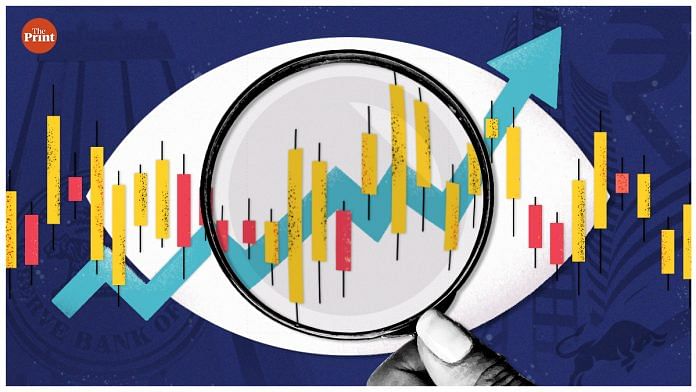Share prices broke free from their usual moorings during the past year. You could even say the Sensex took leave of its senses, because the 30-share benchmark index has gained an astonishing 40 per cent or so in the course of the traditional accounting year that will end with Diwali next week. Investors have enjoyed no year like this in more than a decade. And it’s a boom that almost no one had forecast, other than perennial optimists like Rakesh Jhunjhunwala, whose portfolio has grown in value by more than 150 per cent since the first Covid crackdown of March 2020.
Yet, the disconnect with the “real” world is too obvious to ignore. In a year marked by the second phase of the Covid outbreak, with its attendant tragedies, the full economic toll of the pandemic has become clear — the recovery of economic tempo this year does little more than make up for the drop in economic activity in the previous year. Taken together, if you go by the official numbers, the economy will have got back to where it was pre-Covid. That is not the usual context for a 40 per cent surge in the stock market, on top of a double-digit increase in share prices the previous year. By way of comparison, the Sensex went up by just about a third in the six years to Diwali of 2016, and by a further 40 per cent or so in the next three Samvat years — making for a compounded increase of about 80 per cent over nine years. At Diwali in 2019, no one thought the market was under-valued.
So it is obvious that abundant liquidity and low interest rates — deployed to fight Covid’s economic impact — have fuelled the boom in stock prices. To those factors one could add the sense that the corporate and banking sectors are in better shape, and therefore marching (or ready to march) to a faster drumbeat. Besides, the markets look to the future and not the past — or how would you explain Nykaa’s offer price, and Paytm’s expected offer price?
The real issue for such a runaway market is the medium-term growth outlook. The government thinks it can look forward to 8 per cent, but it has always thought that, irrespective of what it has been able to deliver. The International Monetary Fund thinks a more likely growth figure for the medium term is 6 per cent. Certainly there exist enough factors to dampen future performance: Depressed consumption, damage to employment, and, flowing from these, the low levels of capacity utilisation (63 per cent just now, against a long-term average of 73 per cent). In turn, these translate into a time lapse before the need for fresh private investment. Government investment could bridge the gap, but only up to a point because of the elevated levels of the deficit and public debt.
Also Read: Can Ambani & Adani’s corporate dominance last? Look at South Korea & Japan for answers
Think green, tech, and platform businesses
All things considered, there can be little doubt that the market has overshot in recent weeks, as it often does. The spreading recognition that the Indian market is now more expensive than almost all others has already dampened momentum buying. The likelihood is that the new Samvat will be a period when the market either corrects, or at the least digests the excesses of the year gone by.
What are the options for investors? With central banks in key markets signalling that they will start sucking up excess liquidity, interest rates can go only one way: Up. That will put downward pressure on bond prices, making them a decidedly unattractive choice at the moment. Gold has lost its sheen of a year ago, after two years of improved lustre, but it remains expensive despite buoyant demand and the risk of inflation. As for real estate, prices have settled but the overhang of unused housing stock mitigates against easy capital gains. The only remaining option is the frothier end of the stock market, populated by industry disruptors (think green, tech, and platform businesses). To play in that corner you will need a sharper eye for stock picking and a greater appetite for risk than most retail investors possess.
By special arrangement with Business Standard
Also Read: There’s a festive cheer in Indian economy, let’s hope today’s energy & optimism is sustained



